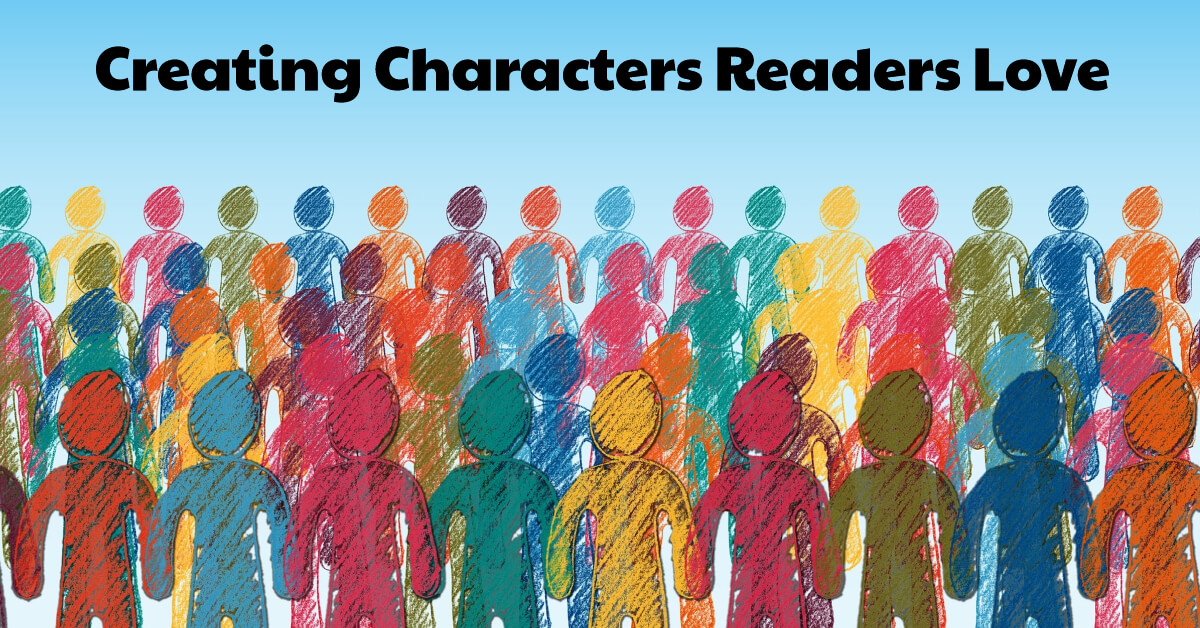In any story, plot is the spine, the various settings are its bones, conflict is its muscle, and characters are its flesh and beauty. Together, they create a framework on which to build a beautiful story full of living, breathing characters. Here are some basic tips on how to make characters readers will love.
Make characters relatable.
Think of the monster movie where someone decides to poke the monster to see if it’s dead. Of course it isn’t, and they are now its next victim. That type of character is what readers call TSTL – Too Stupid To Live. In other words, unrelatable. If your character stands up to the biggest meanest baddie on the block, make it for a good reason—not for the convenience of the plot or because you need someone to die at this moment to show how bad the monster is. Are there stupid people in the world? We all know the answer to that. The point is, don’t litter your story with them.
Give characters a reason to be miserable.
In real life, what keeps you in a bad situation? If you have a way out, why don’t you take it? But what if there is no way out? If your characters stay in a bad situation but there’s no reason they would, they won’t be believable. Maybe your heroine has to finish school and put up with a professor who treats her unfairly because she promised her dying mother she’d be the first in their family to graduate.
A hero who fights unbeatable odds would do so for a solid reason. In Star Wars: A New Hope, Luke is stuck at home with his aunt and uncle because they need him and he feels loyalty toward them. When they’re killed because of the evil empire, Luke wastes no time in joining the rebellion. Give your characters a reason to be “stuck” before you give them a way out.
All characters have a line in the sand.
Everyone has vices. But most people also have lines they will not cross. Let your protagonist see that line and have to determine if he or she will cross it. If nothing is at stake, there’s no conflict. If there’s no conflict, there’s no story. To have a character readers love, there must be something serious at stake, such as a moral dilemma or quandary they must overcome.
Let characters say it their way.
If your characters spoke without dialogue tags (such as “Mary said”) and no action to indicate what they were doing, would readers be able to tell them apart? If not, it’s time to work on character-oriented dialogue. Give each character a unique voice. When I wrote the Bringer of Chaos series, I wrote the immortal Pietas as a highly-educated formal speaker fluent in multiple languages. Pietas never swears and as leader of his people, he holds himself to the highest degree of honesty. His personal ethics reflect in his careful and articulate speech. When he forgets himself and speaks with his mouth full, he’s mortified. He might be alone on this planet with one other person, but that’s no reason to ignore good manners. The human warrior, Six, with whom he is marooned, is earthy and frank. He sprinkles his speech with slang terms and his native Spanish. He’s impulsive and his words show it. Make sure your characters each use language that reflects their inner beliefs and self-image.
Give the villain a reason to hate.
The bad guy should be bad for a reason. What set him (or her) on a destructive path? In Bringer of Chaos, Pietas had been reared from infancy as a soldier. His people had been created as immortal warriors whose only duty was to keep humans safe. If immortals were killed during battle, once they revived, they would be sent back to fight again. Humans had no sympathy for them. Eventually, the immortals turned on their creators and became the oppressors. By the time Origin of Pietas begins, Pietas has hated humanity for nearly two thousand years and has just seen a hundred unarmed immortals slain by human forces. Humans considered that a victory, but the immortals’ retaliation against military forces was called a massacre. Pietas had good reason to hate humans.
Give the story its proper ending.
When writing, it can be difficult to leave your story world. Fortunately, series are popular. If you’ve gotten comfortable with the characters and the world is nicely broken in, why leave? You know what works and what doesn’t. If your readers love your world and the characters, plan for sequels and leave hints there is more to come.
Whether you write by the seat of your pants winging it all the way, or you’re a careful plotter, weave an end that satisfies. In a romance, it’s when the characters live happily ever after (or for now).
How do you know where the end of a story is? Easy. When you’ve told all there is to tell, stop. That’s a simplistic answer, but every story has a beginning, middle, and end. It helps to know where you’re heading when you begin. When the resolution of the story’s main question has been answered, tie it up.
Bringing it all together.
A good story has solid conflict and believable settings. Give the people in it reasons to be there. Cause them to stay in or leave their situation because it makes sense, or because they have no other choice. Allow their moral background to make decisions for them. Let your people each speak with a different voice. Create dialogue that’s recognizable or unique to the main characters. Know why the villain is the villain, and show the villain’s morality (or lack thereof) to your readers. Finally, when you get to the end of your story, and you’ve tied up all the loose ends, stop.
Kayelle Allen is a member at large of the Speculative Fiction Writers Association. She is the author of a whole bunch of great books. You can find out more about her and her work on her website: https://kayelleallen.com/

